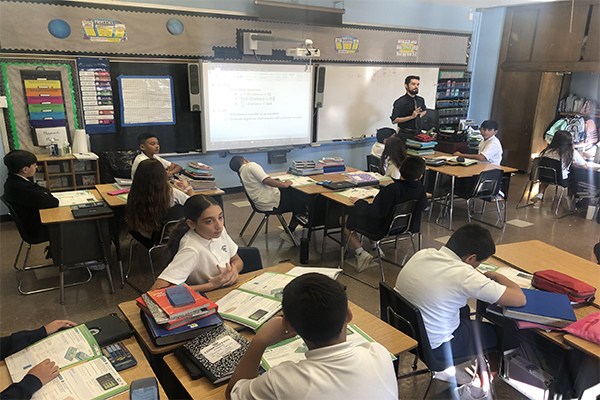
WHITESTONE — Mairen Upton, an eighth-grader at Holy Trinity Catholic Academy in Whitestone, is an example of a trend: Local Catholic schools are outpacing public schools in New York state standardized test scores.
Mairen transferred to Holy Trinity in the third grade after bouncing between public and Catholic schools. Her mom, Hannia, said she noticed a big improvement in Mairen’s standardized test scores since Mairen enrolled in Holy Trinity.
“She did so well that we’re looking at (high schools) that we didn’t even consider before, because these scores are so good,” Upton said.
On the TerraNova, a standardized test for students in grammar school, Mairen’s math score jumped 25 points during her first year at Holy Trinity.
In parochial schools across the Diocese of Brooklyn, 54.7 percent of fourth graders met or exceeded English language arts (ELA) standards during the 2018-19 academic year. That’s 5.1 percentage points above public schools in New York City and 7 percentage points above public schools statewide.
The gap was even bigger in the sixth and seventh grades, where the percentage of diocesan students reaching those scores was 10 to 15 percentage points above public schools city and statewide. Students in the fourth, sixth and seventh grades take the test.
Students from Holy Trinity clocked in with scores above the diocese’s average, as more than 60 percent met or exceeded ELA standards at all three grade levels.
Barbara Kavanagh, the principal, attributed that to splitting English classes into two subjects: one in reading and vocabulary, and the other in spelling, grammar and writing.
Math scores were closer between the diocesan and public schools across the city and New York state. Catholic schools in the diocese had higher marks only among fourth-graders.
But compared with 2018, the diocese saw an increase of 4.7 points in the percentage of sixth-grade students who met or exceeded standards for math and a leap of 7.3 points among fourth-graders.
Kavanagh said diocesan-wide professional development days two years ago with Paul Beaudin, vice president of academic affairs at Suffolk County Community College, made a difference in Holy Trinity’s approach to math. She said that math can be intimidating for children and that Beaudin recommended trying to make it fun with activities like schoolwide multiplication-table competitions.
Some Holy Trinity’s teachers have also used grant money to implement one-to-one programs where each student has an iPad. They use Pearson Envision, a blend of print and digital instruction that allows teachers to customize assignments for each student.
Diane Phelan, associate superintendent for evaluation of programs and students, said state exams are diagnostic. The decision on whether to promote a student isn’t based on a standardized test score.
“If used correctly, the state test results have the power and possibility to close learning gaps and enrich students’ learning,” Phelan said.
Currents News Reporter Tim Harfmann contributed to this report.
